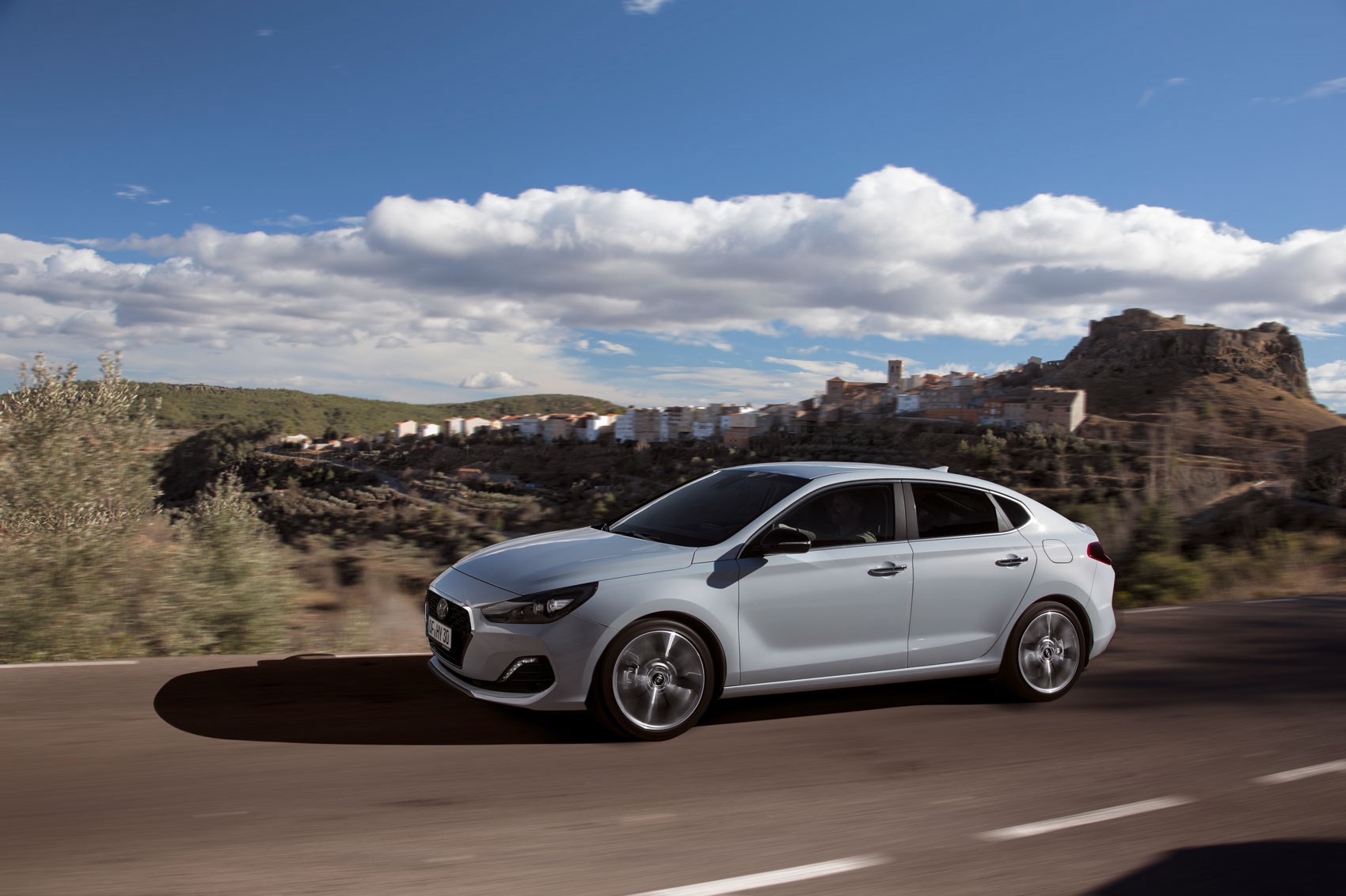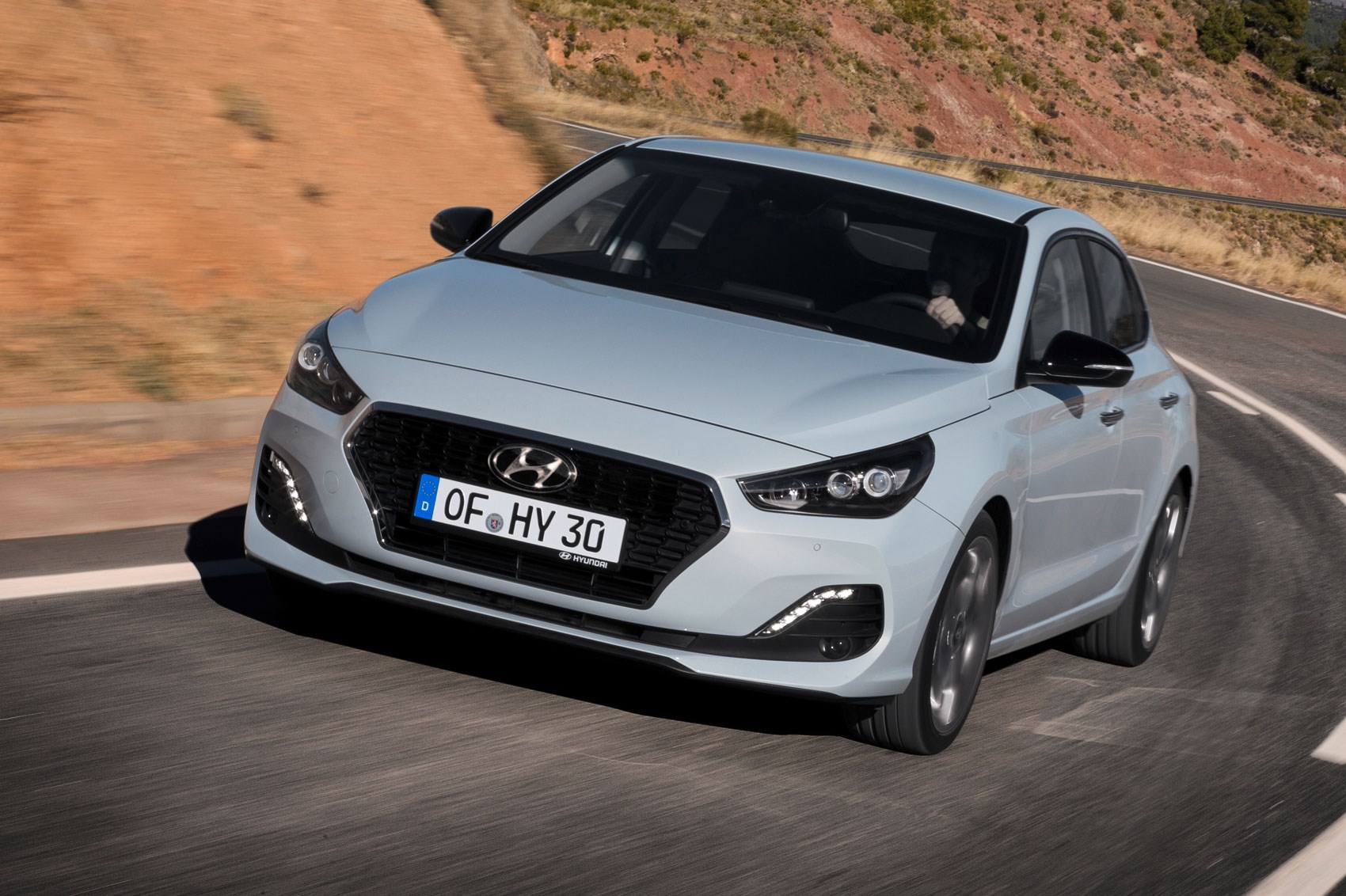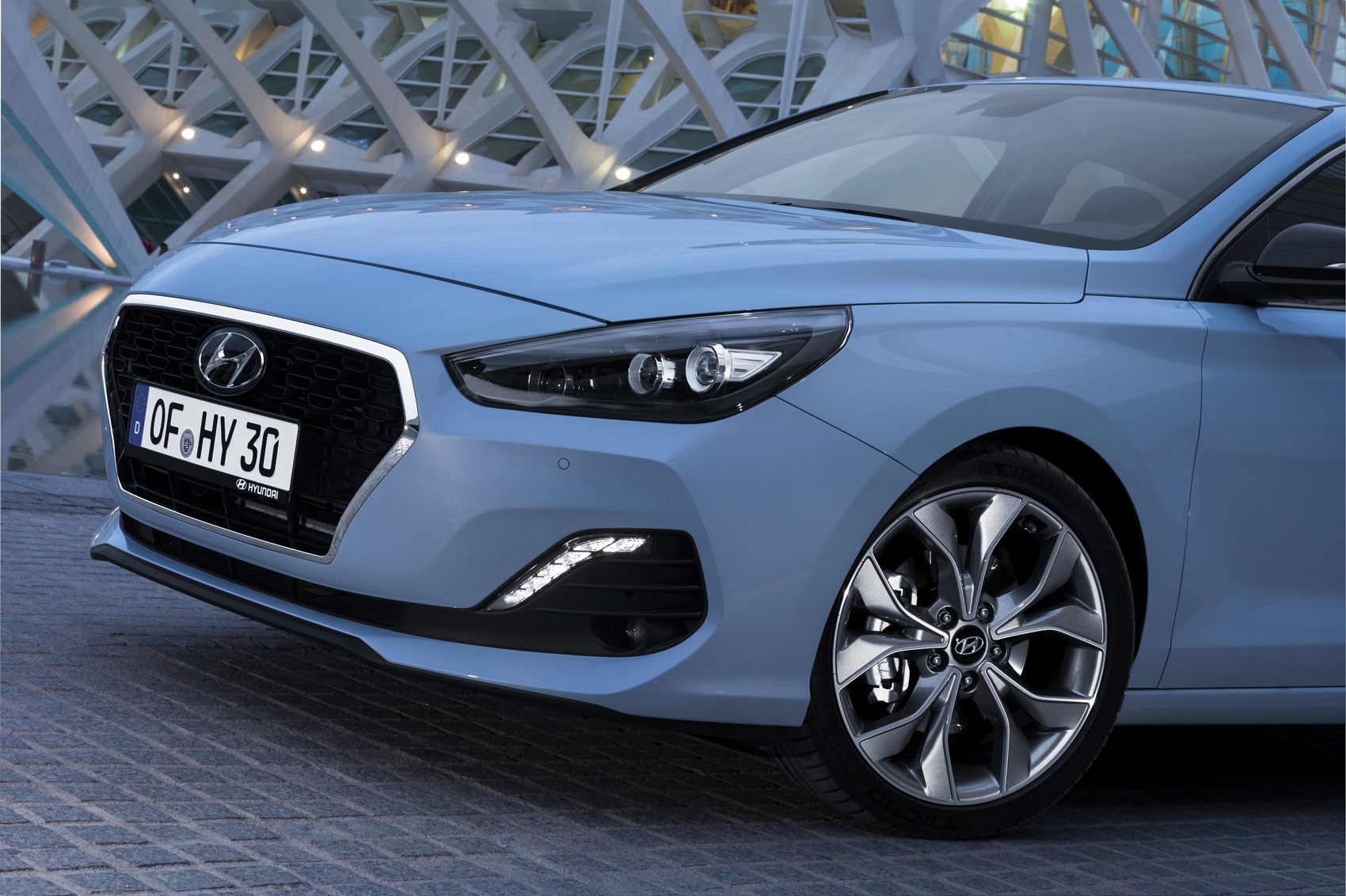► i30 Fastback driven
► Tested with 118bhp 3cyl
► Unusually elegant?
Do you find medium hatchbacks so boring that you’d take a £500 hit for a less-practical but similarly-sized bodystyle? Well look no further this: the sleek four-door Hyundai i30 Fastback.
It’s the fourth and final pillar of the i30 family, sitting alongside the hatch, Tourer estate and of course the wild i30N hot hatch. Just don’t call it a coupe, despite what the Korean firm says… There’ll be no three-door renaissance.
Fastback doesn’t have a huge number of main rivals, but cars like the Skoda Octavia hatch, Mazda 3 Fastback and even the much more premium (and expensive) Mercedes CLA are of a similar ilk.
But this isn’t a car that you’ll see a lot of. Hyundai is predicting sales of just 600 units a year, which means it’ll be outsold by its more conventional hatchback sibling by a considerable margin.
Fastback… Does that mean a second performance version?
Err no. Sorry to be the bearer of bad news but this is simply a reskinned i30 hatch with a 25mm lower roofline, suspension dropped by another 5mm, a slightly smaller grille and a redesigned front bumper incorporating new LED daytime running lights.

In fact, if you were expecting accelerative excitement, go elsewhere. The engine options here are all petrol (for now – a new 1.6 diesel is coming later in 2018), but none of the drivetrains can pull the Fastback through 0-62mph in under nine seconds.
If it’s no hot hatch, is it any good to drive?
Actually, despite its lacklustre on-paper stats, it’s not a bad steer at all, in particular with the 118bhp 1.0 T-GDI. The lowered ride height and relatively lightweight engine over the nose work together to dramatically improve turn-in, while the extra 115mm of length over the back axle means the rear moves around more than in the hatch, which makes it feel more playful.
This isn’t to say it’s engaging in the way the current Focus or Astra is – the feel through the rim of the steering wheel isn’t anywhere near as forensic – but still the recipe works.

Going back to the engine for a second, we found the 1.0-litre the pick of the range. Its 118bhp is delivered in a linear fashion and there’s always twist on tap should you need it. The manual ‘box is fine too, though nothing particularly inspiring to write home about.
We also sampled the 138bhp 1.4 turbo petrol bolted to a twin-clutch auto and found this a far less inspiring proposition – the extra weight of the additional cylinder and the extra parts in the ‘box means it feels far, far heavier and hence less eager to change direction in quite the same agile fashion.
Ride quality is well-judged, with the 17-inch wheels on our car matched impressively to the damping. You get 18s on the 1.4, and they make things a little spikier.
How does it measure up to the i30 hatch?
The Fastback targets buyers who want something a little different to the common-or-garden hatchback – albeit with an identical footprint – and that does mean sacrifices.
Its sloping roofline means six-footers will have their scalp tickled when sitting behind someone of the same height, and there’s certainly room for two adults maximum in the back.

You do lose some usefulness in the boot too, because there’s an unhelpfully high loading lip and while the VDA volume is actually higher than the hatch, the useful space back there is significantly less practical because you’ve only got a depth of around 18 inches to play with between the parcel shelf and false floor. It’ll be fine for a week’s-worth of supermarket shopping but we remain unconvinced that a set of suitcases for a holiday would go in quite so easily.
What about equipment?
The trim structure mirrors exactly the well-specified hatchback, which means reams of safety and driver-assistance tech as standard (adaptive cruise/lane-keeping/auto-braking) along with nav, wireless smartphone charging, a rear-view camera and an 8.0-inch touchscreen.

However, we’re in a top-spec Premium SE car, so get luxuries like leather, seat and steering wheel heating, a panoramic roof and LED headlights.
In typically Hyundai fashion, that’s a lot of toys. There are hardly any optional extras to concern yourself with.
Verdict
The Fastback is a niche proposition, but one that’ll appeal to a particular type of buyer. It’s certainly the elegant option in the i30 line-up, if that’s what you’re looking for, and thanks to that design it’s a far more interesting proposition than most cars of this size and price point.
It’s a likeable, if not at all remarkable machine.
Read our Hyundai reviews